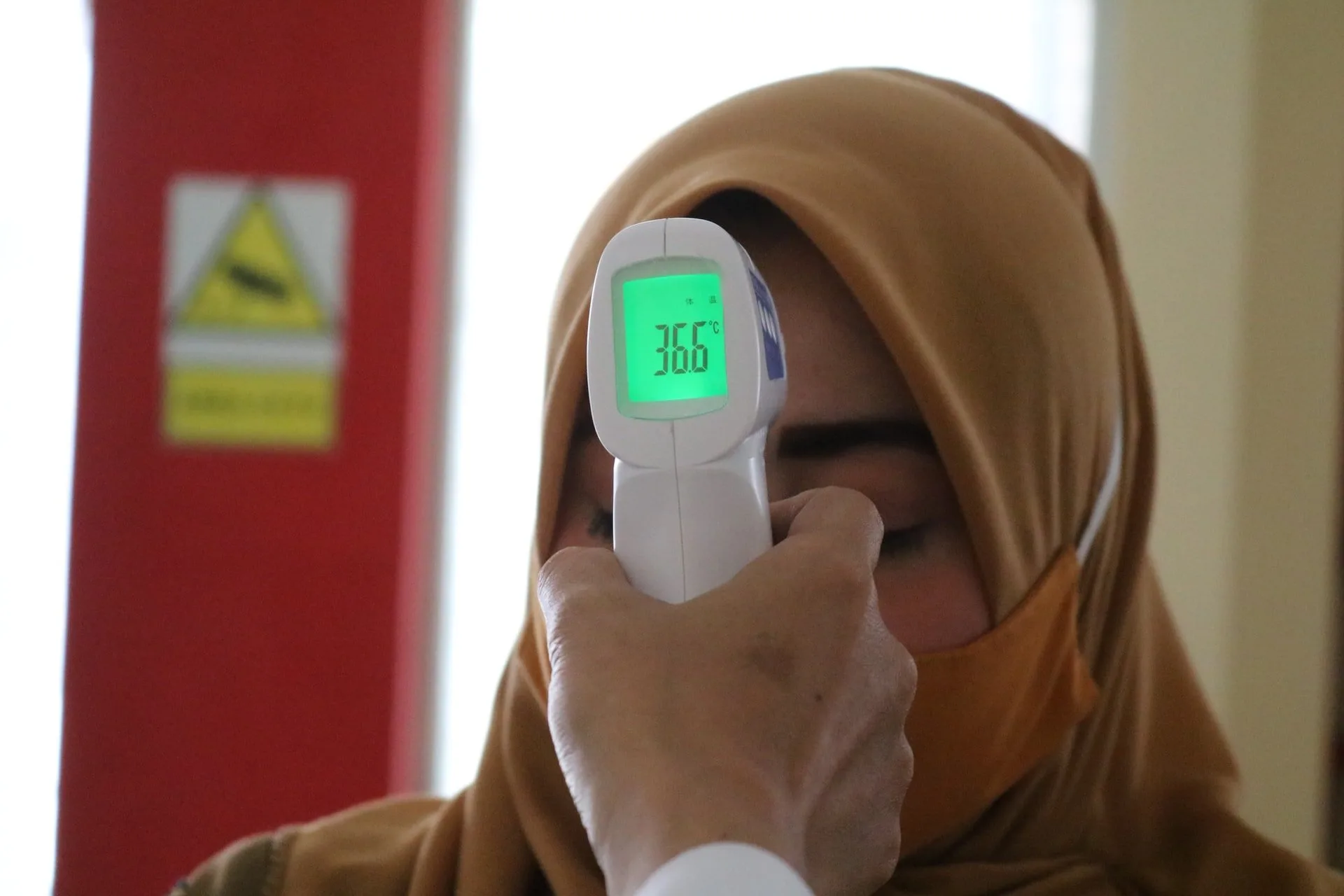With the ongoing spread of Covid-19 the use of temperature monitors is widespread. However, are they really effective in identifying fever related to the pandemic? Physiology experts believe making people stand in front of a scanner to have their body temperature read can result in false negatives. This in turn allows people with Covid-19 to pass through airports and hospitals undetected.
The challenge in detecting fever
Leading experts in physiology have suggested instead that taking temperature readings of a person’s fingertip and eye would give a significantly better and more reliable reading and help identify those with fever. 
This is according to a recent study, co-led by a human physiologist and an expert in temperature regulation, Professor Mike Tipton, and published in Experimental Physiology.
The risks associated with inaccurate readings
Professor Tipton is from the University of Portsmouth. He said: “If scanners are not giving an accurate reading, we run the risk of falsely excluding people from places they may want or need, to go, and we also risk allowing people with the virus to spread the undetected infection they have.”
The study found four key factors:
- Temperature alone isn’t a good indicator of disease. Not all who have the virus have a fever and many who do, develop one only after admission to hospital.
- Measuring skin temperature doesn’t give an accurate estimation of deep body temperature (raised in a fever). A direct measure of deep body temperature is impractical;
- A high temperature, even one taken from deep body, does not necessarily mean a person has Covid-19.
- Taking two temperature measurements, one of the finger, the other of the eye, is likely to be a better and more reliable indicator of a fever-induced increase in deep body temperature.
Other factors influence temperature increases
Professor Tipton said: “Using a surface temperature scanner to obtain a single surface temperature, usually, the forehead is an unreliable method to detect the fever associated with Covid-19. Too many factors make the measurement of a skin temperature a poor surrogate for deep body temperature; skin temperature can change independently of deep body temperature for lots of reasons. Even if such a single measure did reflect deep body temperature reliably, other things, such as exercise can raise deep body temperature.
COVID-19 impact
“The pandemic has had a devastating global effect on all aspects of our lives, and unfortunately, it’s unlikely to be the last pandemic we face. It’s critical we develop a method of gauging if an individual has a fever that’s accurate and fast.”
The most common symptom of 55,924 confirmed cases of Covid-19 reported in China up to February 22, 2020, was fever. This was followed by other symptoms, including dry cough, sputum production, shortness of breath, muscle or joint pain, sore throat, headache chills, nausea or vomiting, nasal congestion, and diarrhea.
COVID-19 but no fever
 However, the researchers say a significant proportion (at least 11 %) of those with Covid-19 do not have a fever. They also found that fewer than half of those admitted to the hospital with suspected Covid-19 had a fever. Yes, the majority of positive cases go on to develop a high temperature after being admitted to the hospital. However, they were infectious before their temperature soared.
However, the researchers say a significant proportion (at least 11 %) of those with Covid-19 do not have a fever. They also found that fewer than half of those admitted to the hospital with suspected Covid-19 had a fever. Yes, the majority of positive cases go on to develop a high temperature after being admitted to the hospital. However, they were infectious before their temperature soared.
Professor Tipton said: “We think we can improve the identification of the presence of fever using the same kit, but looking at the difference between eye and finger temperature – it’s not perfect, but it is potentially better and more reliable.”
The same scanners can easily be adapted to take these two measurements.
The study suggests a way for better temperature detection
The new study argues that taking temperature readings of a person’s fingertip and eye would give a significantly better and more reliable reading and help identify those with fever. A change in deep body temperature is a critical factor in diagnosing disease with as little as a one-degree increase indicating a potential disease.
What is the take out going forward?
The many methods of detecting deep body temperature, widely used in hospitals, are too expensive, invasive, and time-consuming to be widely used outside hospitals. Professor Tipton said: “During the SARS epidemic, in 2003, there was a need for a fast, effective mass screening method and infrared thermography became and remain the cornerstone measurement, despite concerns over its reliability.”
A 2005 study of 1,000 people comparing forehead temperature with three different infrared thermometers gave different temperatures, ranging from 31 °C to 35.6 °C. The infrared thermometers measurements alone varied by as much as 2 °C. In another study, more than 80 percent of the 500 people tested using infrared, gave a false-negative.
The bottom line
Such differences in skin temperature could be due to a range of reasons. These include whether the individual has recently exercised, has an infection, sunburn, or recently drunk alcohol. It also includes how close an individual stands to a scanner, and how warm or cool the air is. How much fat a person has on their body, and even their blood pressure is also included.
References
- Full paper title: Link to paper https://physoc.
onlinelibrary.wiley.com/doi/ abs/10.1113/EP089260 - Experimental Physiology publishes advances in physiology that increase our understanding of how our bodies function in health and disease. http://jp.physoc.org
- The Physiological Society brings together over 4,000 scientists from over 60 countries. The Society promotes physiology with the public and parliament alike. It supports physiologists by organizing world-class conferences and offers grants for research. It also publishes the latest developments in the field in its three leading scientific journals. These are The Journal of Physiology, Experimental Physiology, and Physiological Reports. www.physoc.org



![women [longevity live]](https://longevitylive.com/wp-content/uploads/2020/01/photo-of-women-walking-down-the-street-1116984-100x100.jpg)










